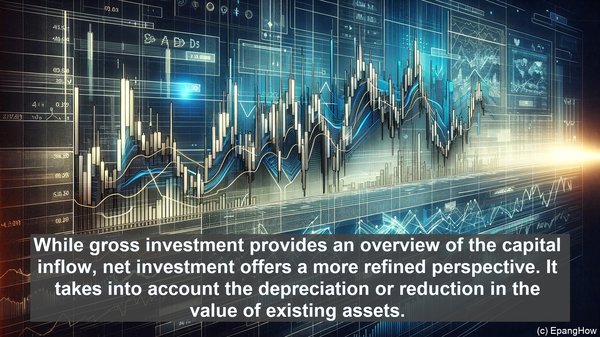Introduction: The Essence of Investment
Hello everyone! In the realm of economics, investment plays a pivotal role. It serves as a catalyst for growth and development, shaping the trajectory of various sectors. However, investment isn’t a monolithic term. It can be dissected into different components, with gross investment and net investment being two crucial facets. Today, we’ll embark on a journey to understand the nuances that set them apart.
Gross Investment: The Broad Spectrum
Let’s start with gross investment. In essence, it encompasses the total expenditure made on capital assets within a specific period. This includes both the replacement of depreciated assets and the addition of new ones. For instance, if a company spends $100,000 on purchasing new machinery and $50,000 on replacing outdated equipment, the gross investment would amount to $150,000. It provides a comprehensive picture of the capital inflow, reflecting the overall economic activity.
Net Investment: The Adjusted Perspective
While gross investment provides an overview of the capital inflow, net investment offers a more refined perspective. It takes into account the depreciation or reduction in the value of existing assets. This is crucial as assets tend to lose value over time due to wear and tear or obsolescence. By subtracting the depreciation from the gross investment, we arrive at the net investment figure. It represents the actual increase in the capital stock, excluding the value lost due to asset depreciation.

Significance of Gross Investment
Gross investment serves as a vital economic indicator. It reflects the level of economic activity and the willingness of businesses to expand their capital base. A higher gross investment often signifies a growing economy, as it indicates increased production capacity and potential job creation. Policymakers and analysts closely monitor gross investment figures to gauge the overall health and trajectory of an economy.
Understanding Net Investment’s Implications
While gross investment provides a broad overview, net investment offers insights into the actual growth in the capital stock. A positive net investment indicates an increase in the productive capacity, which is crucial for sustained economic growth. On the other hand, a negative net investment suggests a decline in the capital stock, which can have adverse implications. It may indicate a lack of investment in maintenance or replacement of assets, potentially leading to inefficiencies and reduced productivity.
Factors Influencing Investment Decisions
Several factors influence investment decisions. These can range from macroeconomic indicators like interest rates, inflation, and government policies to industry-specific factors such as market demand, technological advancements, and competition. Understanding these factors is essential for policymakers, businesses, and investors, as they can shape the investment landscape and its subsequent impact on the economy.

